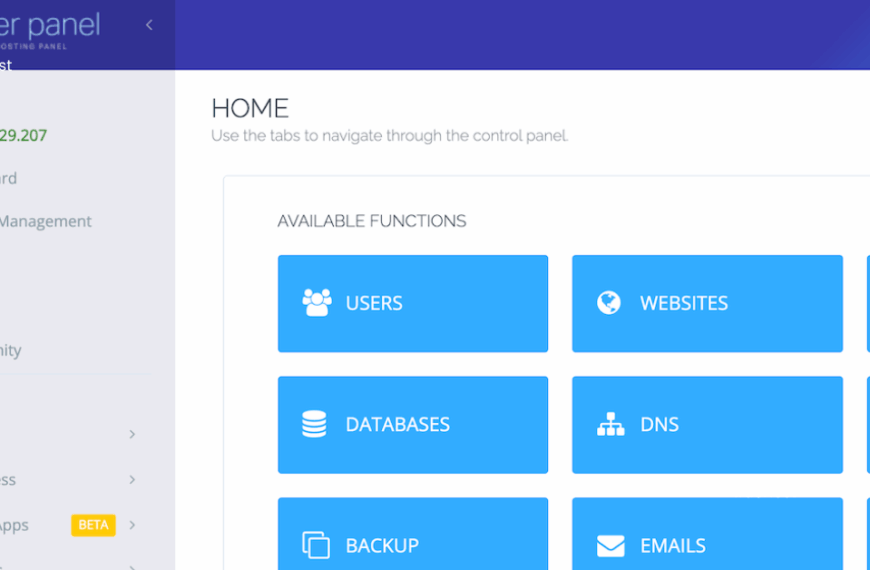You wouldn’t leave your shop unlocked overnight, would you?
Of course not.
But here’s the thing. Your business email holds customer data, invoices, and company secrets. Yet most small businesses leave it wide open to hackers.
Small business owners often think they’re too small to be targeted. That’s a dangerous myth. Hackers love small businesses because they know you’re busy running your company, not studying cybersecurity.
Here’s the good news. You don’t need a tech degree to protect your email. This guide breaks down email security for small business into simple steps you can do today.
We’ll show you how to lock down your inbox and protect your reputation and money.
Why Are Hackers Targeting YOUR Small Business?
You Have What They Want
Think hackers only target big corporations? Think again.
Your small business holds valuable treasures that criminals want. Customer contact lists are worth money on the dark web. Your financial information, like bank details and invoices, can be exploited.
Intellectual property and trade secrets matter too. Even a small bakery has recipes worth stealing. That is why you need the guide for email security for small business A consultancy has client strategies worth copying.
Here’s something sneaky. Hackers can use your email to access your other business accounts through password reset functions. One compromised email becomes the key to everything.
The Cost is More Than Money
A breach hits you in multiple ways.
Financial loss comes first. Fake invoices and wire transfer scams can drain your account in minutes. One UK café lost £23,000 to an email scam in 2024.
Reputational damage hurts worse. Customers trust you with their data. Break that trust, and they’ll go elsewhere. Word spreads fast in tight-knit business communities. That’s why email security for small business is important.
Under GDPR regulations, UK businesses face fines for data breaches. Fines can reach thousands of pounds, even for small companies.
Operational downtime steals your peace of mind. Recovering from an attack takes time you should spend growing your business. Email security for small business is important
The 4 Most Common Email Attacks (And How to Spot Them)
Understanding email security for small business means knowing what you’re up against.
1. Phishing: The Digital Con Artist
Phishing is the oldest trick in the hacker’s playbook.
It works through fake emails designed to trick you into giving up passwords or sensitive information. The email looks official, maybe from your bank or a delivery service.
Here’s how to spot it. Look for urgent language like “Act now or lose your account!” Generic greetings such as “Dear Customer” are red flags. Real companies use your name.
Check sender addresses carefully. That email from “PayPal” might actually come from [email protected]. Notice the tiny difference?
Misspelled URLs are another giveaway. Hover over links before clicking to see where they really go.
2. Spear Phishing: The Personalized Trap
Spear phishing takes things up a notch.
This is a highly targeted attack. The hacker researches you or your business first. They study your social media, website, and public records.
The email seems to come from a colleague, partner, or service you actually use. The request might be plausible, like “urgent wire transfer for that supplier we discussed.”
These are harder to spot because they feel personal. The hacker knows your boss’s name, your recent projects, and your business relationships.
Always verify requests for money or sensitive data through a separate channel. Pick up the phone and call.
3. Malware: The Email Bomb
Malware arrives disguised as a helpful attachment.
It’s malicious software delivered via email attachments or links. Once opened, it infects your system. Ransomware locks your files until you pay. Keyloggers steal every password you type.
Watch for unexpected attachments, especially .zip or .exe files. Links that look strange or use URL shorteners are suspicious too.
Never open attachments from unknown senders. Even from known senders, be cautious if you weren’t expecting anything.
4. Spoofing: The Fake Return Address
Spoofing is identity theft for email addresses.
Hackers fake the “From” address to make it look like it’s from someone you trust. The email might appear to come from your CEO or your accountant.
The email looks legitimate at first glance. But a closer look at the full email header reveals a different actual address. Most email programs let you view full headers in settings.
If something feels off, it probably is. Trust your instincts.
Your 5-Step Shield: Fortify Your Email Today

These steps form the foundation of email security for small business operations.
i) Unleash the Power of Strong, Unique Passwords
Weak passwords are an open invitation to hackers.
Your password shouldn’t be “password123” or your dog’s name. Use a passphrase instead. Something like “Purple-Taxi-Raindance$Bounces!” is strong and memorable.
Here’s the problem. You need different passwords for every account. No human can remember dozens of complex passwords.
That’s where password managers save the day. Tools like Bitwarden or 1Password create and store strong, unique passwords for every account. They’re encrypted vaults that only you can unlock.
You only remember one master password. The manager handles everything else. It auto-fills login forms and works across all your devices.
This single tool transforms your security overnight.
ii) Activate Two-Factor Authentication (2FA) – Your VIP Pass

Two-factor authentication is the most important upgrade you’ll make today.
It adds a second step to logging in. Even if hackers steal your password, they still can’t access your account without the second factor.
That second factor is usually a code from your phone. You enter your password, then the code. Both are required to get in.
Turn on 2FA for your email account right now. Also enable it for banking, social media, and any business tools you use.
Use an authenticator app like Google Authenticator or Authy. These are more secure than SMS codes, which can be intercepted.
Setting up 2FA takes five minutes. Those five minutes could save your business. Email security for small business starts here.
iii) Become a Suspicious Email Detective
Train yourself and your team to think like detectives.
Before clicking anything, do the 10-second check. Look at the sender’s actual email address, not just the display name. Scan for typos in the message. Question any urgent requests.
Follow this rule: “When in doubt, don’t click it. Verify by phone or a separate email.”
Delete suspicious emails immediately. Don’t just leave them in your inbox. Temptation to click grows over time.
Create a company culture where asking “Is this email real?” is encouraged. Nobody should feel embarrassed about double-checking.
Regular training keeps everyone sharp. Hackers evolve their tactics constantly.
iv) Get Professional – Use a Custom Domain Email
Your email address tells customers a lot about you.
A [email protected] address looks professional and trustworthy. A free [email protected] account suggests you’re not serious about your business.
Custom domain emails offer better security too. You control the security settings. You get better spam filtering and protection features.
Most business web hosting plans include professional email. Truehost UK offers robust email hosting designed specifically for small businesses. They handle the technical setup and provide UK-based support.
Professional email isn’t just about looking good. It’s a crucial component of email security for small business protection strategies.
v) Keep Your Digital Armor Shiny – Update Everything!
Outdated software is a hacker’s best friend.
Every week, security researchers discover new vulnerabilities in operating systems, browsers, and applications. Software updates patch these holes before criminals can exploit them.
Enable automatic updates for your computer’s operating system. Do the same for your web browser and antivirus software.
Yes, updates can be annoying. They interrupt your work. But that interruption beats the disaster of a successful hack.
Set updates to install overnight when you’re not working. Check monthly that everything actually updated properly.
This simple habit closes security gaps you didn’t even know existed.
We Also Have Advanced Protections
What Are DMARC, DKIM, and SPF?
These sound technical, but the concept is simple.
Think of them as security seals for your email. DMARC, DKIM, and SPF are protocols that verify your emails are genuine. They stop others from spoofing your domain.
SPF is like a guest list. It tells receiving servers which computers can send email from your domain.
DKIM is a digital signature. It proves your email wasn’t tampered with during delivery.
DMARC is the enforcer. It tells other servers what to do with emails that fail SPF or DKIM checks.
Why does this matter? It protects your brand reputation. If hackers spoof your domain to send scam emails, these protocols stop them. They also improve your email deliverability so legitimate messages reach customers.
Setting these up requires technical knowledge. Ask your IT person or email hosting provider like Truehost to configure them. They handle the complexity while you reap the benefits.
Your Quick-Action Security Checklist
checklist , tick off each item:
☐ I’ve installed a password manager and created strong, unique passwords for all business accounts
☐ I’ve activated Two-Factor Authentication (2FA) on my email account and other critical services
☐ I’ve trained myself and my team to spot phishing emails using the 10-second check
☐ I use a custom domain email address for all business communications
☐ My operating system, browser, and antivirus software are set to update automatically
☐ I’ve asked my hosting provider about implementing DMARC, DKIM, and SPF protocols
☐ I’ve scheduled regular security reviews every three months
This checklist gives you a clear path forward. Work through it at your own pace.
Your Peace of Mind is Priceless
Email security for small business isn’t optional anymore.
It’s a core part of running a modern company. Your customers trust you with their information. Your suppliers rely on secure communication. Your business reputation depends on staying safe.
The steps we’ve covered are simple. Most are free or low-cost. Yet they’re incredibly effective against the vast majority of attacks.
You now have the knowledge. What matters is taking action.
Start today with the easiest step. Turn on Two-Factor Authentication. That single action dramatically improves your security.
Then work through the other steps over the coming week. Each one adds another layer of protection.
Secure your email. Protect your customers. Build a business that’s not only successful but also safe. Your future self will thank you for the time you invested today.
Need help getting started with professional, secure email hosting? Truehost UK offers comprehensive email security solutions designed specifically for UK small businesses. Their team handles the technical details while you focus on growing your company.
Frequently Asked Questions
What is the most important step I can take today for email security for small business?
Activate Two-Factor Authentication (2FA) immediately. It’s the single biggest upgrade to your account security. Even if hackers get your password, they can’t access your account without the second authentication factor. This simple step blocks most attack attempts.
Are password managers really safe to use?
Yes, password managers are far more secure than not using one. They use military-grade encryption to protect your passwords. You only need to remember one master password. The alternative reusing weak passwords across multiple sites is far riskier.
I think I clicked a phishing link. What should I do now?
Don’t panic, but act quickly. Do not enter any information on the suspicious site. Immediately change your password using a different device if possible. Run a full virus scan on your computer. Contact your IT support or email provider. Monitor your accounts closely for unusual activity.
Why is a custom email more secure than free email services?
Custom domain emails give you and your provider more control over security settings. You can implement advanced protections like DMARC, DKIM, and SPF. Professional email services often include better spam filtering, malware protection, and dedicated support. They also look more trustworthy to customers and partners.
How often should I train my employees on email security?
Cybersecurity isn’t a one-time lesson. Conduct brief refresher training every three to six months. Hackers constantly evolve their tactics, so your team needs regular updates. Simulated phishing tests are highly effective for keeping staff alert. Make security awareness part of your company culture, not just an annual checkbox exercise.



